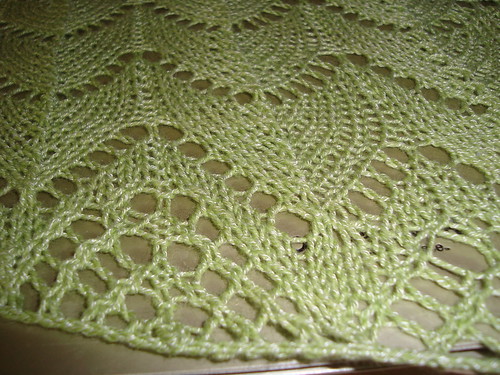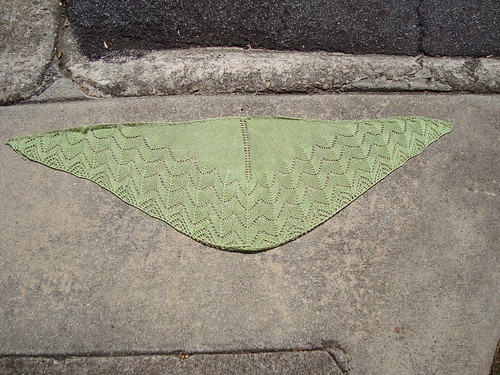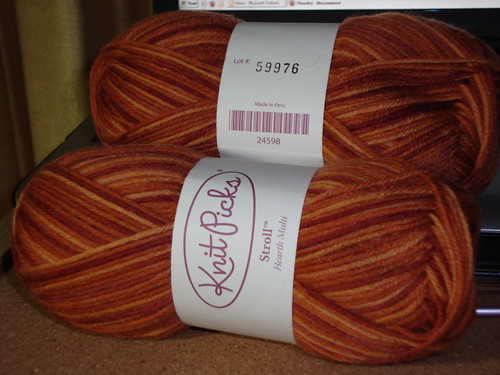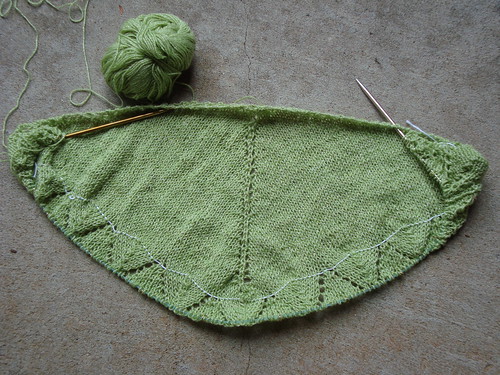I really like knitted socks. I like the way they look--especially the ones with tight little geometric designs. I like the way they fit. (My feet are US 5-1/2. Regular women's socks are too big and kids' socks aren't any fun.)
I even like knitting socks myself...up to a point. That point is when the socks stop getting bigger.

I started these socks in January. It's an easy little pattern. Rows 1, 3, and 5 are "knit"; Rows 2 and 4 are "P1, K4"; Row 6 is "purl." That's it.
But that's "it"--for-friggin'-
ever. I've been working on both socks at the same time (to eliminate second-sock-syndrome, where finishing the first sock leaves the knitter with no desire to start a second one). One sock is a bit further along than the other: 90 rows vs. 84 rows. Times 70 stitches per row. That's
12,180 stitches. And they aren't socks yet. They aren't even
close to being socks yet.
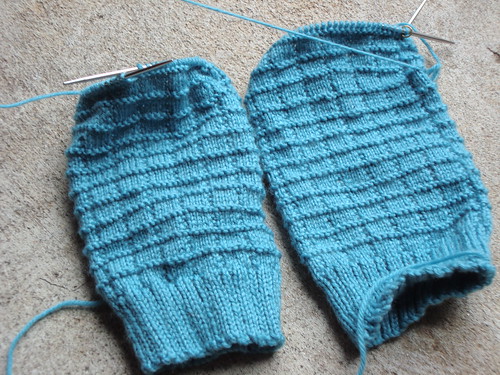
Now, I've made socks before. My first knitted pair was these plain-vanilla socks: simple ribbing, plain foot. It was a heavier-than-usual sock yarn, so they knitted up pretty fast.

Last year, I made two pairs of socks for my sister:

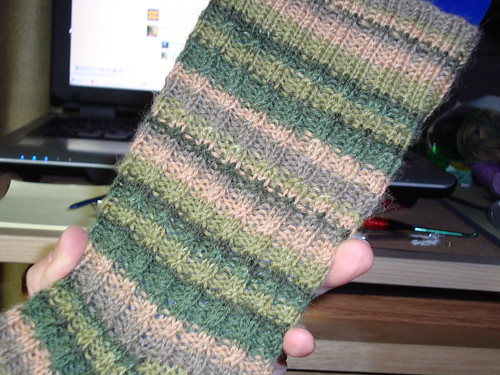
The purple socks didn't take very long--or at least it didn't feel like very long. The pattern moved along quickly. The striped ones took--well, they took for-friggin'-ever. (They were Christmas socks. I had one sock done by Christmas. Frantic knitting every available minute for a week produced the second sock by New Year's.)
So I'm thinking that those lovely tiny geometric designs that I like to
look at so much are exactly the kinds of sock designs I need to stop knitting.
Now I've got lots of sock yarn--variegated, solid, and striping. My family asked what I wanted for Christmas, I told them, and they obligingly gave me sock pattern books and sock yarn. And I already had quite a bit of sock yarn. Sock yarn can be used for socks. It also can be used for small "
shawlettes"--little lacy scarf-cum-shawl constructions (most shawlette patterns take about the same amount of yarn as a pair of socks), although there's a limit to how many shawlettes any woman needs in her wardrobe (especially a woman like me, who wears a uniform to work every day). Beyond shawlettes, the uses of sock yarn are a bit limited. You can make baby things--as long as you want to make baby things with lots of very tiny stitches...in tan, khaki, and green stripes or some other non-infant-like colors. Most purchases of sock yarn are made in quantities that don't give you a whole lot of choices in patterns...beyond socks.
But there are lots of sock patterns out there. Lots of free-online sock patterns, too. There are
patterned socks. There are
lacy socks.
There are cabled socks. (Okay, forget about the cabled socks. I've done cables and I'm not crazy about them. Doing cables around and around a sock is a more appalling idea than knitting endless geometric designs on socks. No cables for me...but take a look at those socks!) But there are socks with
complicated patterns that require charts with keys and
lots of concentration. The value of that kind of sock is that once you get through the repeat once time, you can really feel like you've
done something, made some progress. Once you've done the pattern repeat half a dozen times--not enough times to be bored with it--you're down the leg and ready to start the heel.
I'm not going to frog my poor, boring Ridged Squares socks. Sometimes you need some mindless knitting while you're killing time waiting for your car to be repaired. Having a pattern you can pick up, look at for a minute, and resume, then put away for a week (or month) or more is very useful. Sometimes I'll work on these at work, during my 30-minute lunch break.
But I'm going to find another pattern I like, pick some yarn from my stash, and start a new pair--very soon. I've resisted having lots of projects in the works at one time, but I'm going to stop worrying about that. Having one pair of socks that is moving along like sludge shouldn't interfere with my desire to knit something more fun.
Even if the "more fun" is another pair of socks.
Shown above: The plain vanilla socks were knitted in Elann Esprit. The purple, gold and green socks (the pattern is called Sunday Swing Socks) are knitted in Patons Stretch Socks yarn. The striped socks were knitted in Lane Cervinia Forever.

